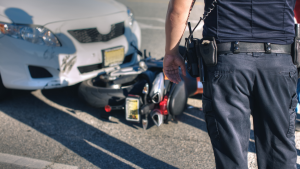Disasters strike when we least expect them, leaving devastation and chaos in their wake. But, what if there was a way to reduce the risk of disasters; what if there was a way to build resilient communities that are better equipped to deal with them?
Disaster Risk Reduction (DRR) is one such solution. By mitigating potential risks, enhancing preparedness and planning for recovery beforehand, DRR can help communities withstand natural calamities — both predictable and unpredictable. In this blog post, we’ll delve deeper into how building resilient communities through DRR works, why it is crucial in today’s world and how Lyceum comes to the party with a Bachelor of Arts in Disaster and Safety Management.
Introduction to Disaster Risk Reduction
Disaster Risk Reduction (DRR) is a proactive approach to reducing the vulnerabilities of communities. It aims to decrease risks through an understanding of hazards, exposure, vulnerabilities and capacities. DRR also encompasses local level risk management and planning for effective response to disasters.
DRR strategies are important in both developed and developing countries. In many developed countries, DRR is seen as a way to supplement or complement existing emergency response systems. In developing countries, where often there are few or no formal emergency response systems in place, DRR can provide an essential framework for protecting communities from disasters.
A number of international treaties and conventions have been adopted in recent years that recognise the importance of DRR. The most notable of these is the Sendai Framework for Disaster Risk Reduction 2015-2030, which was endorsed by the UN General Assembly in 2015.
The Sendai Framework sets out seven global priorities for DRR:
- Understanding disaster risk.
- Investing in DRR for resilience.
- Strengthening disaster risk governance to manage disaster risk.
- Enhancing early warning and preparedness for effective response.
- Building better in-recovery, rehabilitation and reconstruction.
- Taking climate change into account to build resilience to new risks.
- Reducing mortality, minimising economic loss and improving social protection against disasters.
Key benefits of Disaster Risk Reduction
There are many benefits to DRR, both for individuals and communities:
-Protect lives and livelihoods
-Reduce the costs of response and recovery
-Build more resilient communities
Why not register for Lyceum’s Bachelor of Arts in Disaster and Safety Management? Enrol now!
Reducing risks for building resilience in communities
DRR efforts aim to reduce the physical, social, economic and environmental vulnerabilities of communities to disasters. By reducing vulnerabilities, communities become more resilient – that is, better able to withstand shocks and bounce back quickly after a disaster. There are many different ways to reduce disaster risks in communities. Some common measures include:
– Strengthening building codes and standards
– Improving land-use planning
– Implementing early warning systems
– Enhancing community preparedness and response capacity
– Investing in risk-reduction infrastructure such as dams and levees
Effective strategies for preparing communities for disasters
When it comes to preparing communities for disasters, there are a variety of effective strategies that can be employed. One such strategy is community organising. This can involve bringing people together to identify the risks and vulnerabilities they face, as well as developing action plans to mitigate these hazards.
Another key strategy is capacity building. This can involve providing training and resources to individuals and groups so they are better equipped to respond to and recover from disasters. Additionally, financial incentives can be used to encourage investment in DRR measures.
Ultimately, the most effective way to prepare communities for disasters is by taking a comprehensive and holistic approach that encompasses all of these elements. By working together, we can build more resilient communities that are better prepared to withstand the impacts of disasters.
Community education and awareness programmes
As the world becomes more urbanised and technologically connected, the risk of disaster strikes increases. Despite this increased risk, many communities are ill-prepared to respond to and recover from these disasters. One way to build resilience within a community is through DRR programmes. These programmes can take many different forms, but they ultimately all aim to educate and raise awareness about the dangers of specific disasters, as well as how to prepare for and respond to them.
DRR programmes typically begin with hazard mapping, which helps identify where vulnerable populations are located in relation to potential disaster risks. Once hazards are identified, the community can begin developing plans to mitigate or avoid these risks. For example, if a community is located in an area prone to flooding, they might develop a plan to evacuate people to higher ground in the event of a flood. Or, if a community is at risk for wildfires, they might create a plan to clear brush and create defensible space around homes and businesses.
In addition to planning and preparedness activities, DRR programmes also focus on educating the public about specific risks and what they can do to stay safe. This education can take many forms, including having a school-based curriculum, public service announcements, informational campaigns and more. By raising awareness about risks and promoting safety measures, DRR programmes help empower individuals and communities to be better prepared for disasters.
Best practices for post-disaster recovery
When a disaster strikes, it can be hard to know what to do next. That’s why it’s important to have a plan in place for post-disaster recovery. Here are some best practices for post-disaster recovery:
- Get in touch with your insurance company as soon as possible. You will need to file a claim and start the process of rebuilding your home or business.
- Create a list of essential items that you will need in the aftermath of the disaster. This could include food, water, medicine, and personal items like clothes and toiletries.
- Stay in touch with loved ones. Register with the Red Cross Safe and Well website or use another method to let your family and friends know you’re okay.
- Take care of yourself physically and emotionally. Disasters can be traumatising, so make sure to take care of yourself and reach out for help if you need it.
- Start making plans for rebuilding your home or business as soon as possible. Work with reputable contractors who understand the challenges of post-disaster reconstruction.
By following these best practices, you can make post-disaster recovery easier on yourself and your loved ones.
Conclusion
Building resilience to disasters requires geographic and recovery planning, coordinating with local agencies, increasing support for vulnerable communities, and understanding how the intersection of population displacement and climate change can exacerbate risks. It is important for governments at all levels to recognise the need to invest in resilient systems, without such investment now, we will be paying more later as damages from disasters occur over time. Local level actions are necessary components of comprehensive risk reduction strategies — we must look beyond preparedness activities towards sustainable development solutions that prioritise long-term protection against hazards, so that our most vulnerable citizens are not left behind in a changing world.



